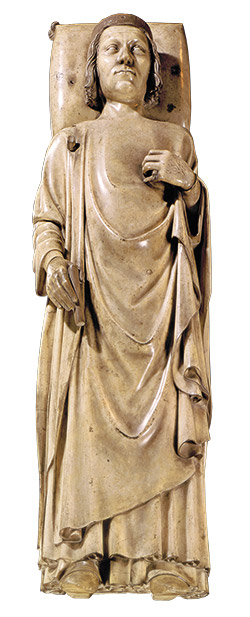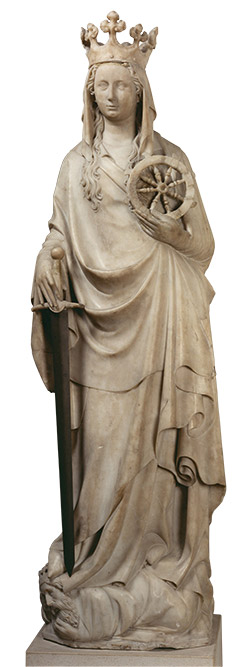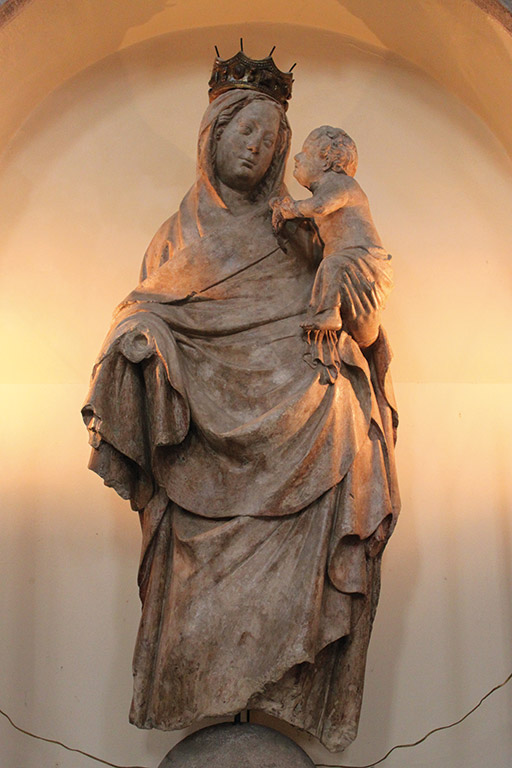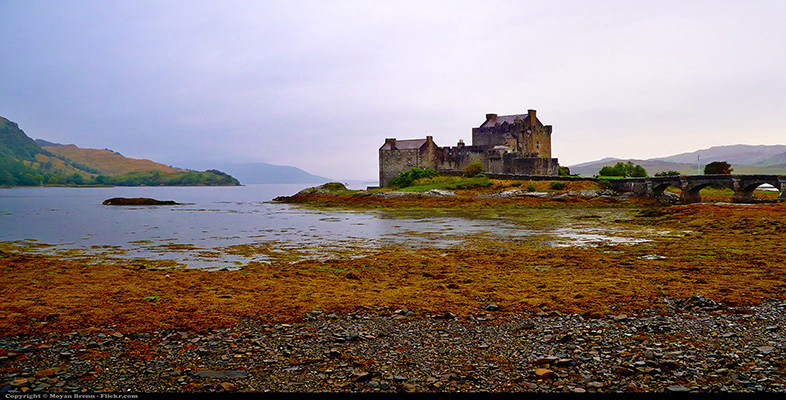Artistic quality
The fact that a work of art had a function did not mean that artistic quality was a matter of indifference. Some artists’ guilds, such as the painters’ guild of Tournai, south of Brussels, required candidates to submit a ‘masterpiece’ for examination by the guild in order to win the status of master. Those scrutinising the masterpieces must have had a clear idea of the criteria of quality they were hoping for, even if these criteria were never set down in writing. The careful selection of artists even from far-flung locations, and the preference for one practitioner above another, shows that patrons too were quite capable of discriminating on the basis of artistic prowess. Abbot Suger (c.1081–1151) explained that the twelfth-century windows at Saint-Denis in Paris, for example, were done ‘by the exquisite hands of many masters from different regions’ (Suger, 1979, p. 73). The effectiveness of a work of art depended to a great extent on peculiarly artistic factors. This much is implied by the Libri Carolini written at the court of the Emperor Charlemagne as early as c.790 CE: ‘images sometimes turn out beautiful and sometimes ugly, according to the understanding [ingenium] and skill [artificium] of the artist’ (Belting, 1994, p. 533). A work of art during the medieval and Renaissance period was expected to be of high quality as well as purposeful.
The chronicler of England and France during the Hundred Years War, Jean Froissart (c.1337–c.1405), made a clear judgement of artistic quality in favour of the Netherlandish sculptor André Beauneveu (active 1364–1402) claiming that he ‘did not then have a better, nor equal in any land, nor any who made so many fine works living in France or in Hainaut – which was his country of origin – or in the kingdom of England’ (Nash, 2007, p. 31). A native of Valenciennes, now in northern France, Beauneveu became ‘ymagier’ to Charles V of France (ruled 1364–80) and carved his marble tomb at Saint-Denis between 1364 and 1366 (Figure 1).

In addition to various Netherlandish commissions, between 1374 and 1386 he worked on the tomb and funerary chapel of the Count of Flanders, Louis de Mâle (1330–84), for which the statue of Saint Catherine at Kortrijk was probably made (Figure 2). Froissart encountered him in Bourges in France at the court of Jean, Duc de Berry (1340–1416), where he worked from 1386 to 1402.

A damaged stone Virgin and Child now in Santa Sofia, Venice (Figure 3), has convincingly been associated with Beauneveu’s style (Wolters, 1967, and Wolters, 1976, cat. 204, pp. 259–60; Nuttall, 2012, Part 3, Chapter 5). It is distinctively naturalistic in the intensity of the lifelike locked gaze of mother and child, while the courtly yet restrained sinuous forms ‘soothe the eyes’, to use Lucas of Tuy’s turn of phrase. At slightly under life-size, it would almost certainly have been commissioned rather than sent for speculative sale. Italy was certainly not short of skilled local sculptors in the later part of the fourteenth century. This statue is very likely to have been perceived as distinctively different from Venetian sculpture. To go to the trouble and expense of transporting it from northern Europe represents a deliberate choice on the part of the commissioner, whether an individual, group or institution, that requires explanation.

